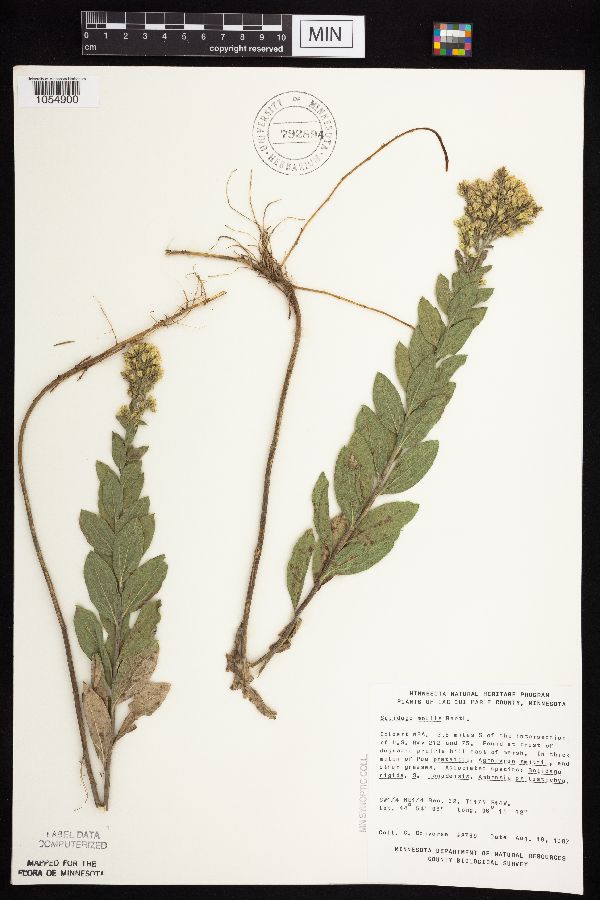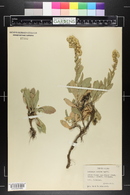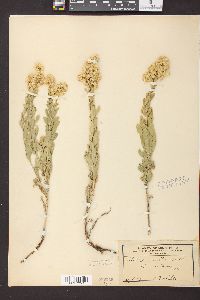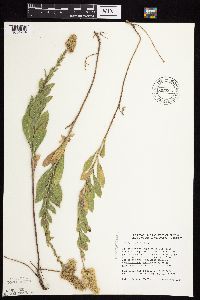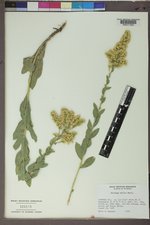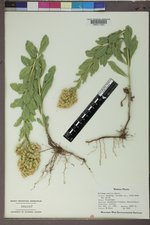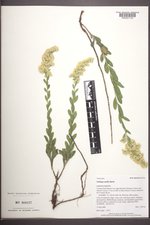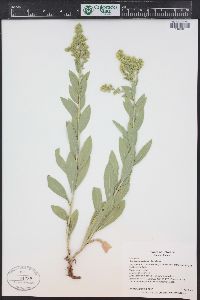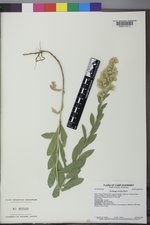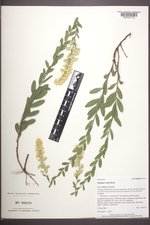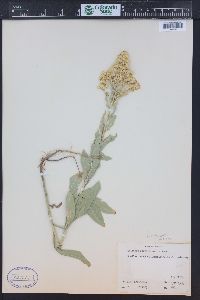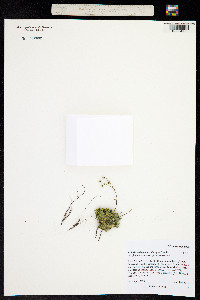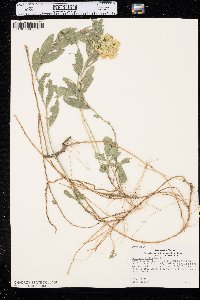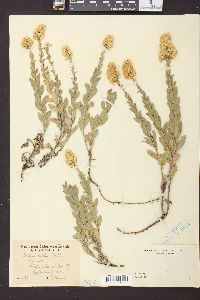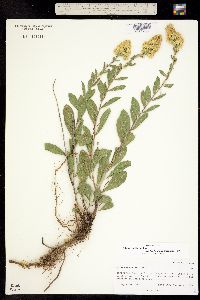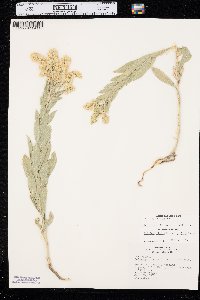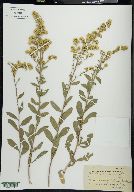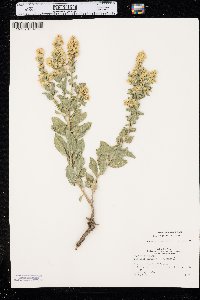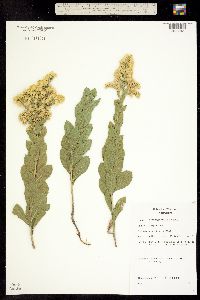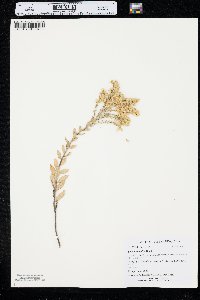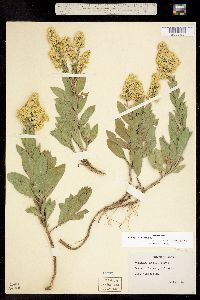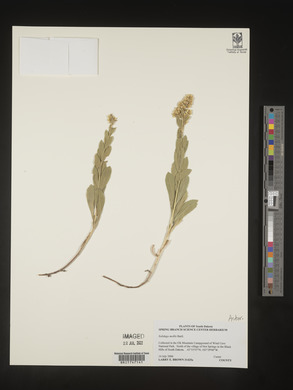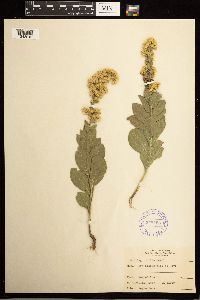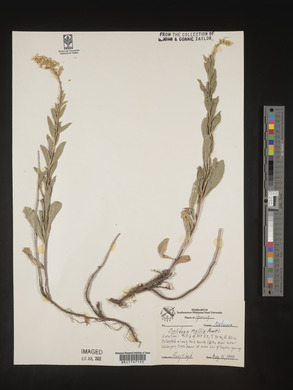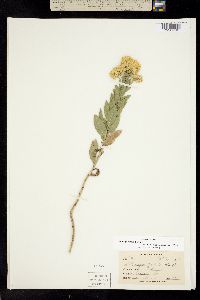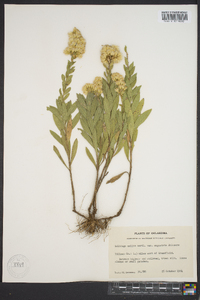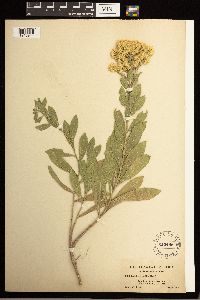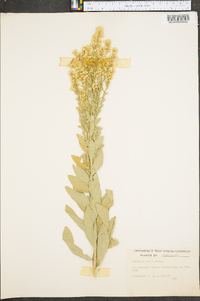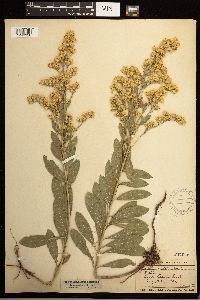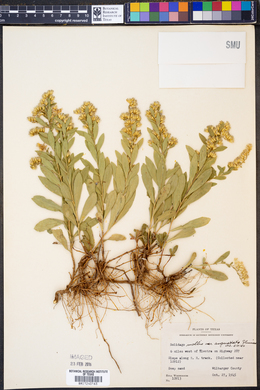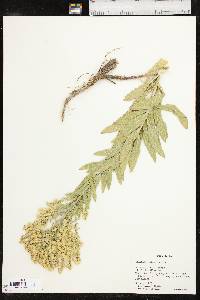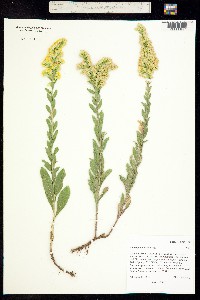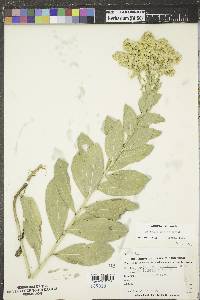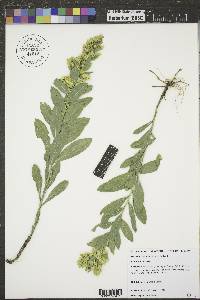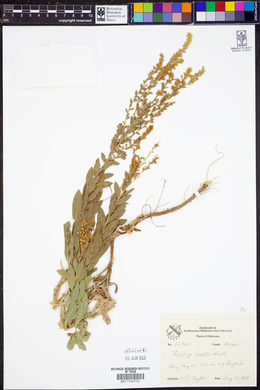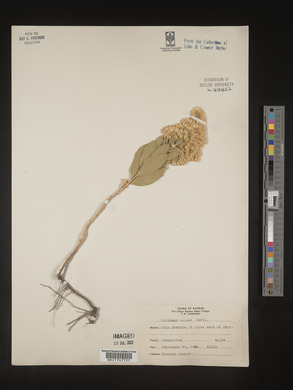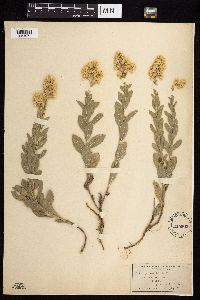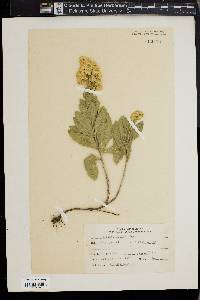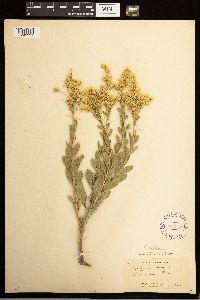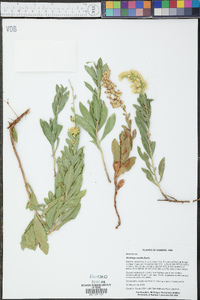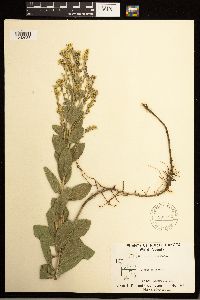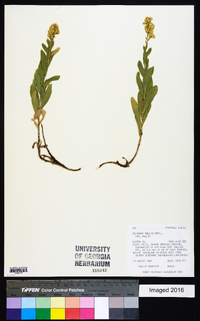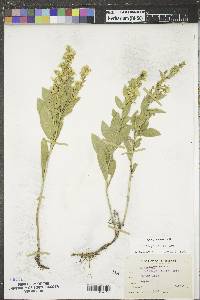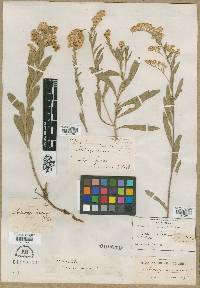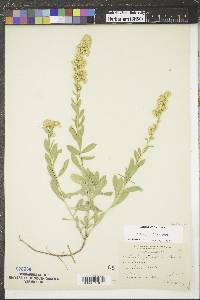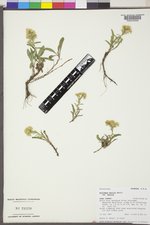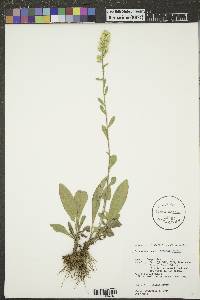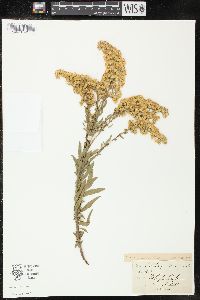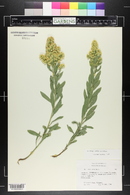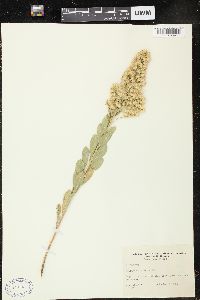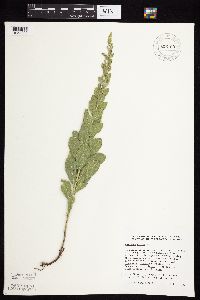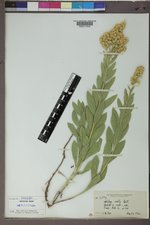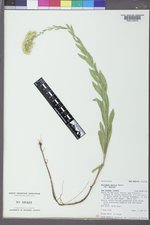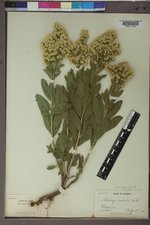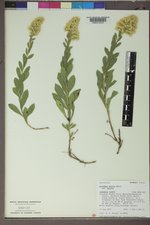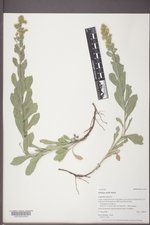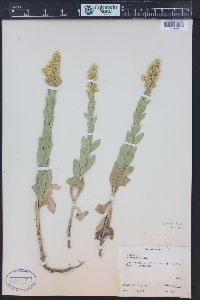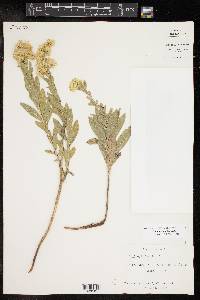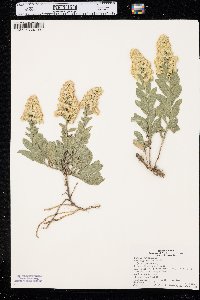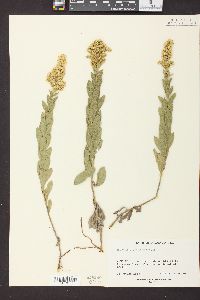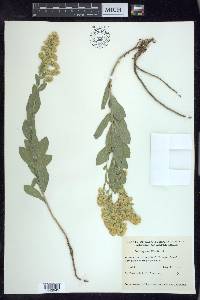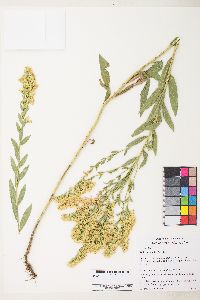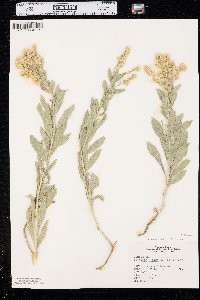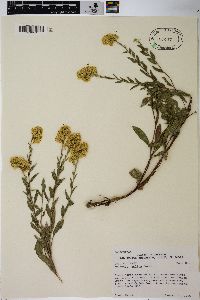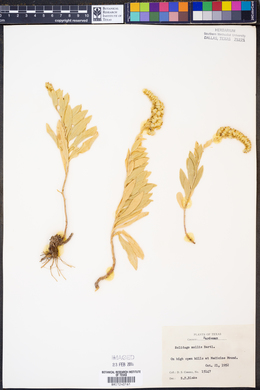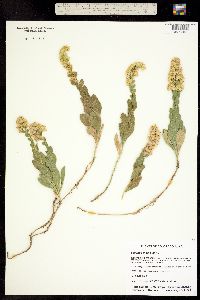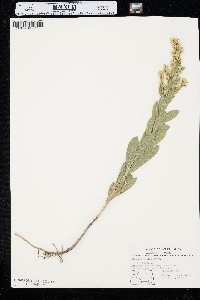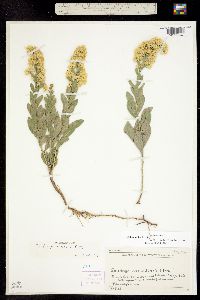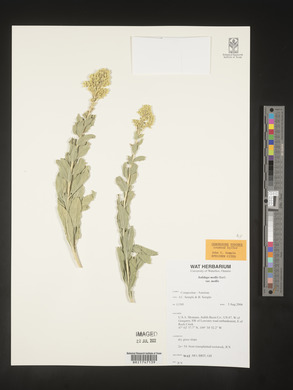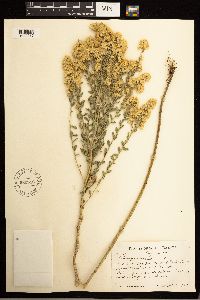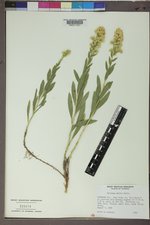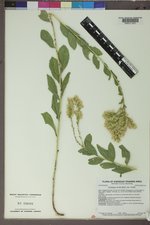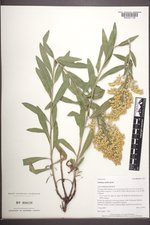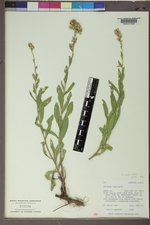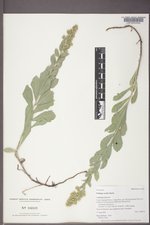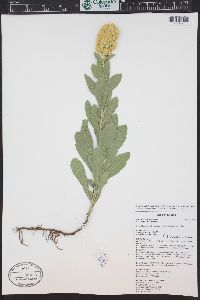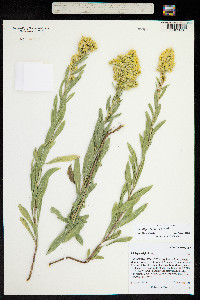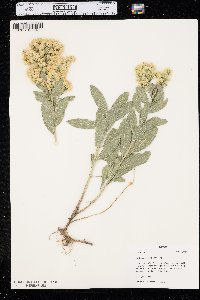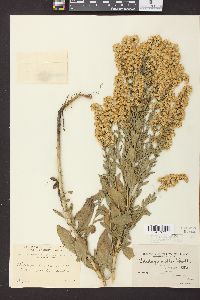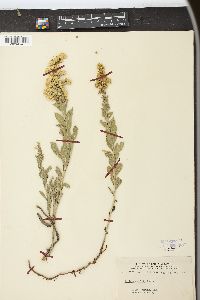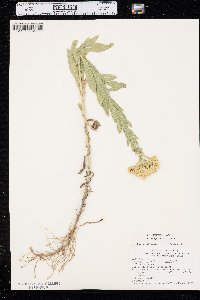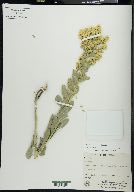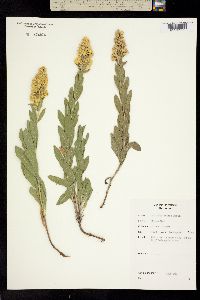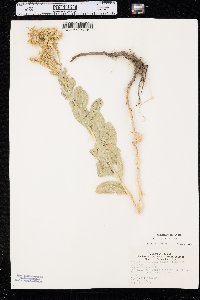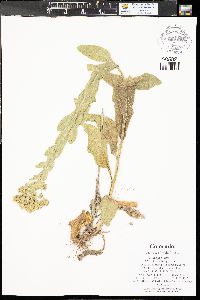
|
|
|
|
Family: Asteraceae
Velvet Goldenrod, more...velvety goldenrod
[Solidago incana, moreSolidago nemoralis var. incana (Torr. & A. Gray) A. Gray, Solidago nemoralis var. mollis (Bartl.) A. Gray] |
Plants loosely clustered, 10-50 (-70) cm; rhizomes creeping. Stems 1 (at ends of rhizomes), ascending to erect, grayish green, moderately to densely finely strigilloso-puberulent. Leaves: basal and proximal often withering by flowering, gradually tapering to winged petioles 1 / 2 length of leaf, blades 45-100 × 10-35 mm, proximalmost much smaller, margins serrate, faces moderately finely scabroso-strigillose; mid and distal cauline sessile, blades elliptic to lanceolate or ovate, 10-60 × 4-20 mm, sometimes much reduced distally, firm, thickish, margins serrate to entire, strongly 3-nerved or sometimes brochidodromous, faces moderately finely strigillose. Heads (5-)50-300, in compact thyrsiform to secund-pyramidal paniculiform arrays, proximal branches ascending, sometimes apically recurved or branches spreading, recurved, secund. Peduncles 0.5-3 mm, moderately to densely finely hispiduloso-strigillose; bracteoles 0-3 , lanceolate, strigillose, grading into phyllaries. Involucres campanulate, 3-6 mm. Phyllaries in 3-4 series, lanceolate to oblong (to 1.5 mm wide), strongly unequal, margins ciliate, apices acute to obtuse, glabrous. Ray florets 6-10; laminae 1-2 × 0.2-0.6 mm. Disc florets 3-8; corollas 2.4-3.8 mm, lobes 0.7-1.2 mm. Cypselae (cylindro-obconic) 1.5-2 mm, sparsely strigillose; pappi ca. 2-3 mm. 2n = 18, 36, 54. Flowering Jul-Oct. Dry or drying prairies, open woods, along fence rows; 300-1700 m; Alta., Man., Sask.; Colo., Iowa, Kans., Minn., Mont., Nebr., N.Mex., N.Dak., Okla., S.Dak., Tex., Wis., Wyo. Solidago mollis is quite variable in array shape, which ranges from compact club-shaped to elongate pyramid-shaped, the apex leaning to one side. Plants with narrower, more sparsely strigose leaves that are similar in appearance to those of S. radula but are not scabrous have been treated as var. angustata Shinners. Those occur in Oklahoma and Texas. G. L. Nesom (1993b) discussed the possible conspecificity of S. mollis and S. velutina (including S. sparsiflora and S. californica); this does not appear to be justified based on morphology and habitat differences.
Plants rhizomatous, 1-6 dm; herbage densely spreading- hirtellous throughout, or the stem glabrous below; lvs chiefly cauline, numerous and crowded, triple- nerved, elliptic and sessile (or the lower cauline oblanceolate and obscurely petiolate), rounded to acute at the tip, the larger ones 3-10 cm נ8-40 mm, the middle ones 2.5-4 times as long as wide; infl dense, paniculiform or occasionally compactly thyrsoid, the lower branches often ±recurved-secund; invol 3.5-6 mm, glabrous, its bracts imbricate, rounded to acutish, firm, the broader ones 0.8-1.3 mm wide; rays 6-9, 3-5 mm, relatively broad; disk-fls 3-8; achenes short-hairy; 2n=36, 54. Plains, dry hills, and dry, open woods; w. Minn. and Io. to Man. and Okla., w. to Mont. and Colo. Gleason, Henry A. & Cronquist, Arthur J. 1991. Manual of vascular plants of northeastern United States and adjacent Canada. lxxv + 910 pp. ©The New York Botanical Garden. All rights reserved. Used by permission. |
This project was made possible in part by the Institute of Museum and Library Services [MG-70-19-0057-19].
Powered by Symbiota

